Baking Dish and Casserole Conversion Guide
Is there a difference between a 9x13-inch dish and a 3-quart casserole? We’ve got the answers!
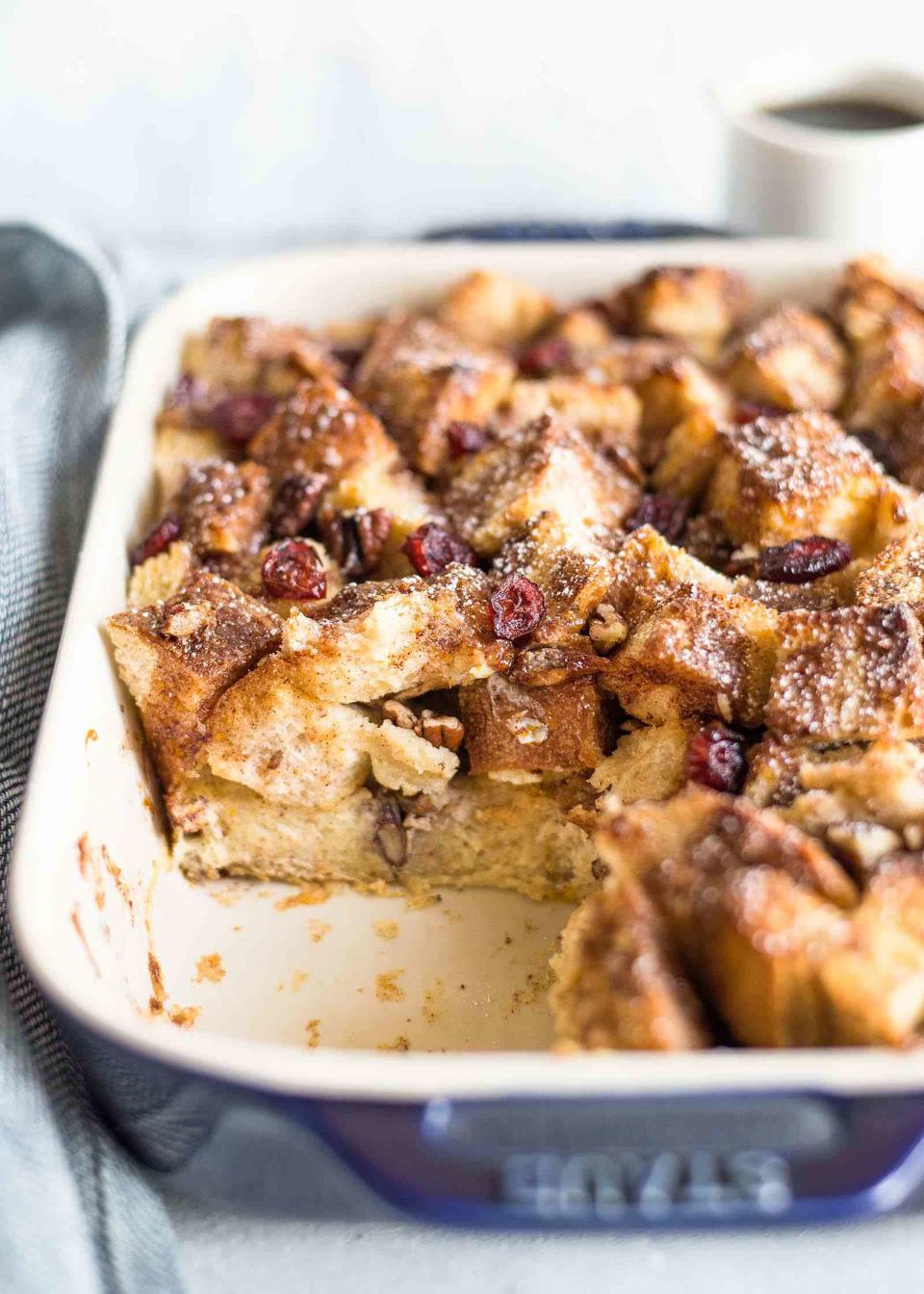
Simply Recipes / Lisa Lin
You have a 9x9-inch square pan and your brownie recipe calls for an 8x8-inch. Or your 2-quart casserole is in the fridge half-full of tuna noodle and you don’t feel like emptying it out. Can you substitute a 9x13-inch dish?
Eventually, every home cook will brush up against these conundrums. Often there are no hard and fast answers because every baking dish (or pan or casserole) is a little different.
Use the table below for quick answers, and keep reading to learn a few tips for success.
Baking Dish and Casserole Conversion Chart
Baking Dish Dimensions (in inches) | Capacity |
9x5x3 loaf pan | 2 quarts |
8 1/2x4 1/2x2 1/2 loaf pan | 1 1/2 quarts |
8x8x2 square pan | 2 quarts |
9x9x2 square pan | 2 1/2 quarts |
11x7x2 rectangular pan | 2 1/2 quarts |
9x13x2 rectangular pan | 3 quarts |
14x10x2 rectangular pan | 4 quarts |
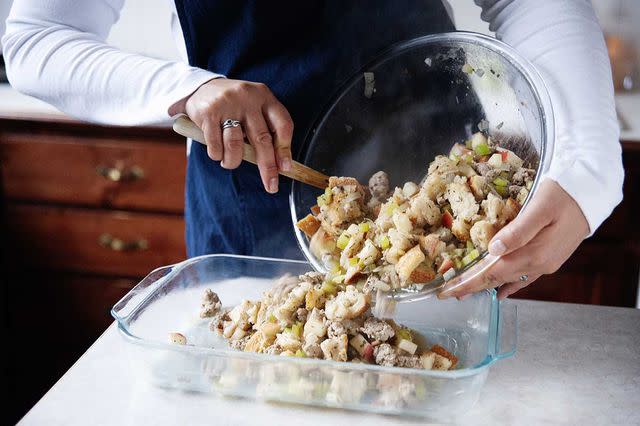
Simply Recipes / Alison Bickel
How to Convert Baking Dishes
Be mindful of the baking time any time you do a dish swap. It may very well be a little shorter or longer than the recipe says. Converting to a smaller pan often means a longer bake time, while converting to a larger pan usually shrinks the cook time.
Think of surface area. If two dishes have the same capacity but one is shallower, the shallower dish will probably bake faster than the deeper one.
Glassware casseroles and dishes bake a little faster. Many sources call for reducing the oven temperature by 25°F if the recipe is baked in glassware. Even if you don’t reduce the oven temperature, you may want to check on the doneness a little earlier than normal.
It’s better to use a larger dish than called for versus a smaller dish. No one wants an overflow situation—particularly if it means any spillover burning on the bottom of the oven. Don’t have a larger dish handy? Set your pan on a rimmed baking sheet as a precaution to catch any overflow.
Doubling or halving recipes often will work, but you want to think of two factors: depth and surface area. Those will affect the baking time and consistency of your recipe.
Every dish or pan is different. You’ll not get quite the same results baking brownies in glassware as you would aluminum. But don’t let that keep you from making brownies! Embrace the quirks of your baking dishes, and learn to make the most of them. Those little discoveries are what make cooking such a satisfying adventure.
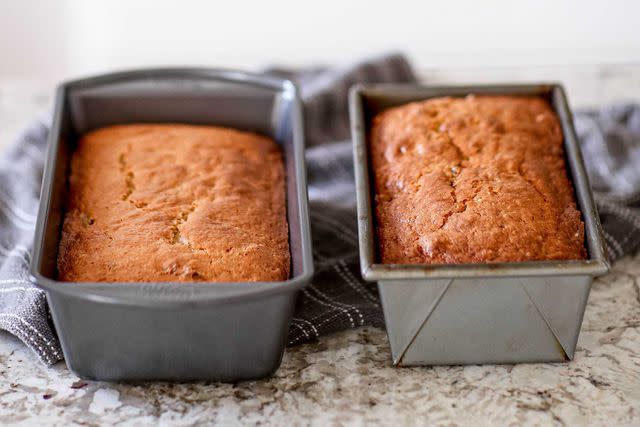
Simply Recipes / Alison Conklin
The pan on the left is 8 1/2x4 1/2 inches, while the one on the right is 8x4 inches. You can see the difference in batches of the same banana bread recipe baked in each.Capacity Vs. Dimension
One issue is how baking dishes are classified. Sometimes manufacturers refer to how many quarts the dish holds, aka its capacity. These are often stoneware or glass casseroles, like Corningware, Pyrex, or Le Creuset.
And other dishes and pans—usually metal or glass ones—go by their dimensions. The classic 9x13-inch pan is a terrific example.
Read More: The Best Casserole Dishes for Your Most Comforting Meals
How to Measure a Dish or Pan
If you don’t know the dimensions or capacity of a baking dish, how can you know a recipe will fit in it? Don’t worry! There are a number of ways to find out.
Look at the bottom of the pan or dish. Sometimes the capacity or dimensions are engraved or embossed there.
Use a ruler or tape measure to measure it. Obvious, but there you go. That’ll give you the dimension. Measure the top of the dish from inner rim to inner rim.
Measure the volume. Pour water from a measuring cup into a dish, filling it all the way to the top. This tells you its capacity.
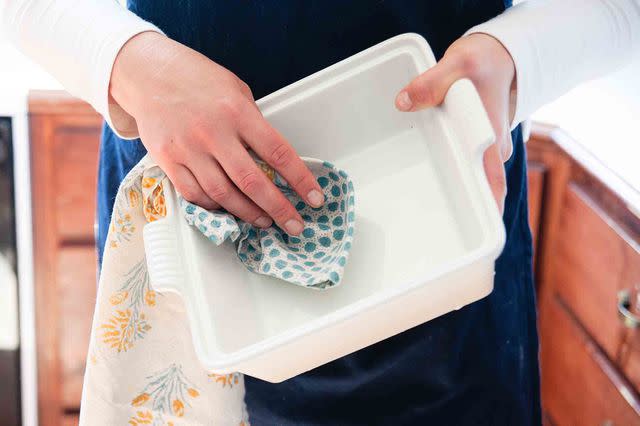
Simply Recipes / Alison Bickel
Use the dimensions to calculate the volume: Because most baking dishes are fluted on the sides, this method is imperfect, but it can give you a general idea of capacity. Measure the length, width, and height of the dish from its inside edges. Multiply those three numbers together and you’ll get the volume. For instance, an 11 1/2 x 7 3/4x2 3/4-inch dish has a capacity of 245 cubic inches. A 9x13x2-inch dish has a capacity of 234 cubic inches. Swapping one of those dishes for the other is likely a safe bet.
Google it: Manufacturer’s websites may give you the capacity and dimensions of specific baking dishes on product pages. You could also try Amazon and look for product specs. This method does not work so well for the vintage Piral terracotta casserole you inherited from Aunt Margie, but it’s pretty solid for more common pans and dishes.
Still in a pinch? See the chart below. We did the conversion work for you!
Read More: A Guide to Loaf Pans
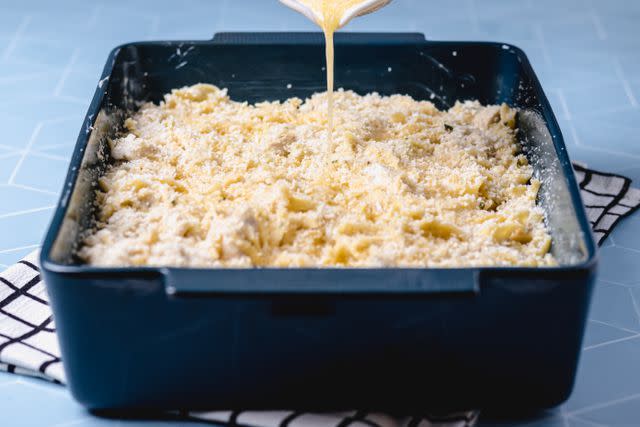
Simply Recipes / Ciara Kehoe
Swap Away and Bake These Goodies
Read the original article on Simply Recipes.


